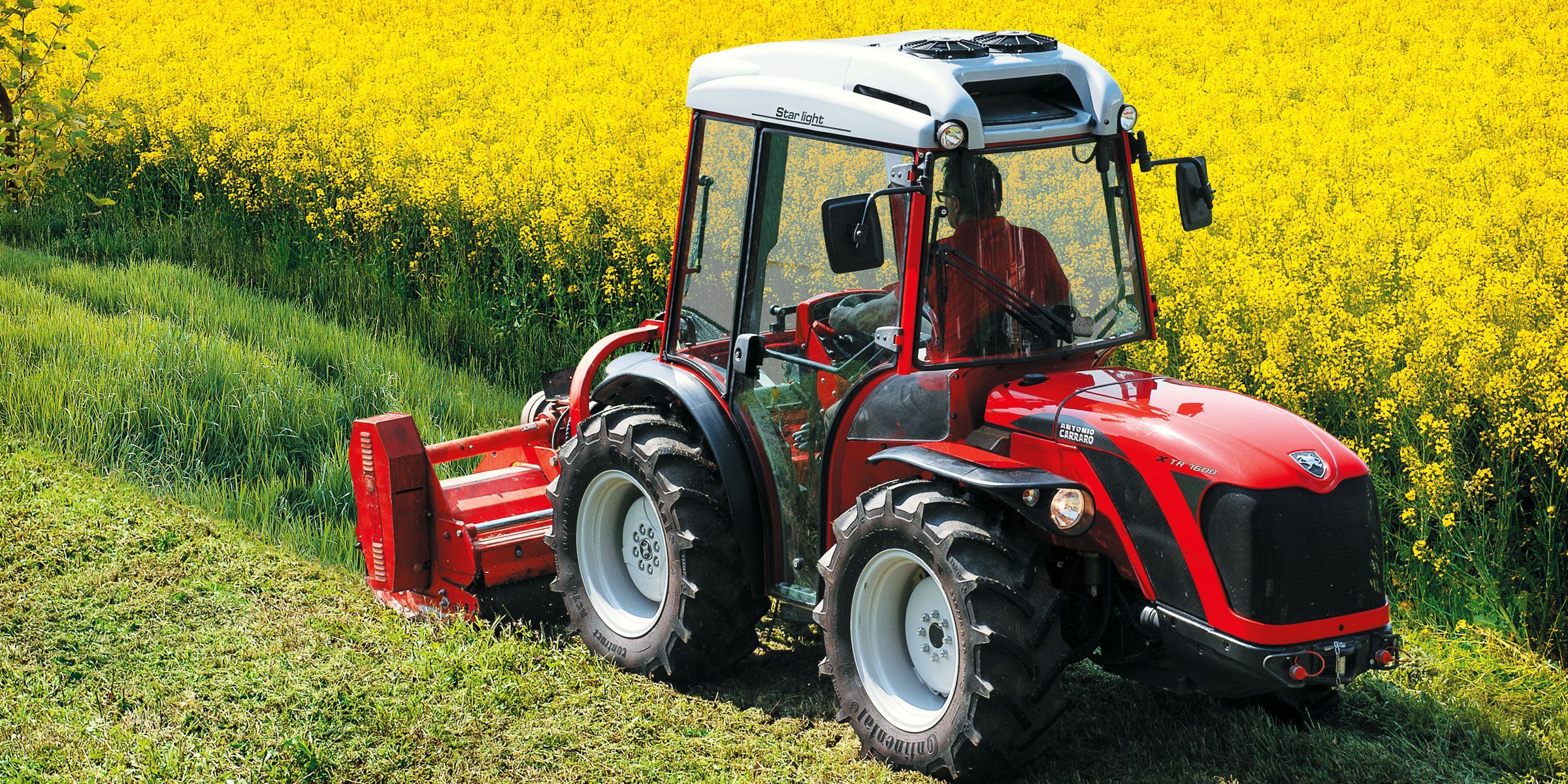
Tractors with tires of the same size
More and more brands are offering tractors with wheels of the same size - but what are the advantages?
Small front wheels, large rear wheels - this is the typical image that many people see when they think of a tractor. Standard tractors are often characterized by different wheel sizes on the front and rear axles. However, there are more and more tractors with four wheels of the same size. But what are the advantages of four wheels of the same size on a tractor? We'll tell you.
What are the advantages of tractors with wheels of the same size?
More and more tractors with four equal-sized wheels are being offered for special crops in particular. No wonder, as these tractors have a number of advantages that are particularly desirable in this area. Thanks to the more even distribution of weight on both axles, these tractors are particularly impressive due to their excellent traction and therefore increased climbing ability. At the same time, the center of gravity of tractors with wheels of the same size is lower than that of comparable standard tractors, which increases the stability of the tractor. This makes tractors with wheels of the same size particularly interesting as tractors for steep slopes. The more even distribution of weight on the tires reduces the pressure on the ground and thus protects the soil better.
For tractors with high outputs, wheels of the same size have another advantage: in order to achieve a certain output level, the size of the rear wheels on conventional standard tractors must be increased. However, this is not possible indefinitely in view of the furrow and row widths in the fields. All-wheel tractors with wheels of the same size avoid this problem. This also enables very high outputs with smaller wheel sizes than standard tractors.
In addition, the attachment and mounting options for tractors with four wheels of the same size are often more varied. The number of possible attachment points increases, especially if the tractor cab is positioned centrally. The tractor can even be converted into a self-propelled vehicle using special attachments.

What are the disadvantages of tractors with wheels of the same size?
Why do many tractors still have wheels of different sizes if wheels of the same size offer an advantage in terms of weight distribution and wheel size? This is actually mainly due to the steering: With typical front-wheel steering, tractors with four wheels of the same size have a larger turning circle and are therefore more difficult to maneuver. However, this disadvantage can be compensated for if you use a tractor with articulated or all-wheel steering. With these, the maneuverability of the tractor is maintained. In addition, the view of front-mounted implements can be somewhat more restricted with wheels of the same size if the tractor cab is positioned centrally.
Short:
Advantages of wheels of the same size:
- Higher climbing ability
- Better stability
- More even weight distribution
- Gentle on the ground
- Smaller wheel size than standard tractors with the same performance level
- More versatile mounting options behind the cab
Disadvantages of wheels of the same size:
- Less maneuverability with front-wheel steering
- Poorer overview with front-mounted implements if cab is in the middle
- Often higher wheelbase than comparable standard tractors